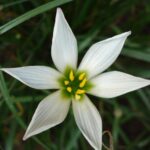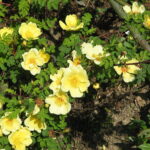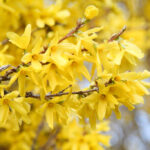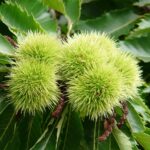Pruning and cutting back of the sweet chestnut
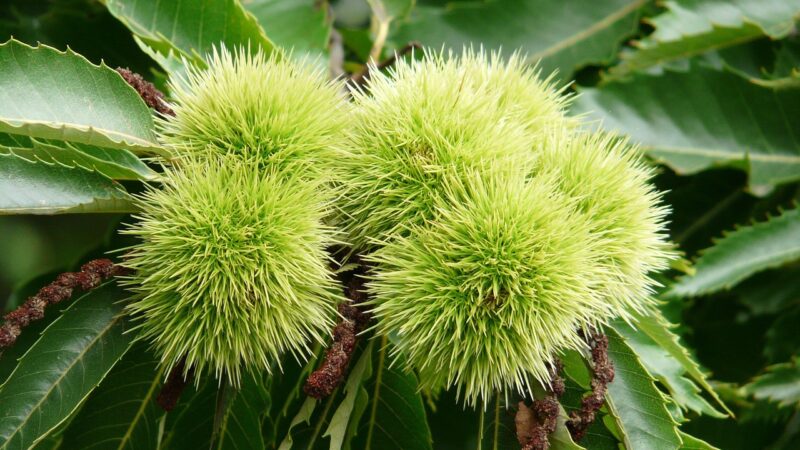
Pruning is a vital horticultural practice that, when done correctly and at the right time, can significantly enhance the health, structure, and productivity of a sweet chestnut tree. It is a thoughtful intervention that guides the tree’s growth, rather than simply reducing its size. The primary objectives of pruning change as the tree matures, from establishing a strong framework in its youth to maintaining structural integrity and fruitfulness in its later years. A well-pruned tree is not only more aesthetically pleasing but is also more resilient to storms, less prone to diseases, and capable of producing a more consistent and higher-quality harvest of nuts.
Understanding the principles behind why and how to make each cut is essential for success. Improper pruning, such as making cuts in the wrong place or removing too much of the canopy at once, can cause significant stress to the tree and create entry points for devastating diseases. Each cut should have a clear purpose, whether it is to remove a weak branch, improve light penetration, or guide the shape of the tree. By approaching the task with knowledge and care, you can work in partnership with the tree’s natural growth habits to create a strong, healthy, and productive specimen that will thrive for many years.
For young trees, the focus of pruning is entirely on formation and structure. This formative pruning in the early years is a crucial investment in the tree’s future. The goal is to develop a single, strong central leader and a well-spaced arrangement of scaffold branches that will form the main framework of the tree. This early guidance prevents future structural problems, such as weak, narrow-angled branch attachments or competing leaders, which can become major failure points as the tree grows larger and heavier.
As the tree matures, the pruning strategy shifts towards maintenance. This involves the regular removal of what can be called the three ‘D’s: dead, damaged, and diseased wood. Additionally, maintenance pruning includes thinning the canopy to improve light penetration and air circulation, which helps to reduce disease pressure and promotes the even ripening of nuts. This regular, judicious thinning maintains the tree’s vigor and ensures that it remains a safe, stable, and productive feature in the landscape for its entire long life.
Best time to prune
The timing of pruning is a critical factor that can influence the tree’s response to the cuts and its overall health. The absolute best time to perform most pruning on a sweet chestnut tree is during its dormant season, which is from late autumn after the leaves have fallen until early spring before the buds begin to swell. Pruning during this period has several distinct advantages. Firstly, the absence of leaves allows for a clear view of the tree’s entire branch structure, making it much easier to identify problems and make well-informed decisions about which branches to remove or shorten.
More articles on this topic
Pruning during dormancy also minimizes the stress on the tree. During the growing season, the tree is actively using its energy reserves for leaf production, growth, and fighting off pests and diseases. Cutting off large branches at this time removes a significant portion of its energy-producing leaves and forces it to expend additional energy on wound closure. In contrast, during dormancy, the tree’s metabolic activity is low, and the pruning cuts are made just before the spring growth flush, which allows the tree to begin the healing process quickly and efficiently as soon as the growing season begins.
Another significant reason for pruning in the late dormant period, particularly in late winter or very early spring, is to reduce the risk of disease infection. Many fungal and bacterial pathogens are less active in the cold, dry conditions of winter. Making fresh cuts during the wet, mild weather of spring or summer can create open wounds that are highly susceptible to infection. By pruning just before the new season’s growth starts, the tree can rapidly form a protective layer of callus tissue over the wounds, sealing them off from potential invaders.
While dormant pruning is ideal for structural work and general maintenance, there are exceptions. If a branch is broken by a storm or is found to be diseased during the summer, it should be removed immediately to prevent further damage or the spread of the pathogen. This type of emergency pruning can be done at any time of year. However, for all routine, planned pruning aimed at shaping the tree or thinning the canopy, waiting for the dormant season is the safest and most effective strategy.
Formative pruning of young trees
The pruning performed during the first few years of a sweet chestnut’s life is known as formative pruning, and it is the most important pruning the tree will ever receive. The primary goal is to establish a strong and well-balanced permanent framework that will support the tree throughout its life. This involves encouraging the development of a single, dominant central stem, known as the central leader, and selecting a series of strong, well-spaced lateral branches, called scaffold branches, that will form the main limbs of the tree. This structure is inherently stronger and more durable than a multi-stemmed or poorly balanced tree.
More articles on this topic
Formative pruning should not begin in the first year after planting, as the tree needs time to recover from transplant shock and establish its root system. It is best to start in the second or third winter. The first step is to identify and maintain the central leader. If there are any competing upright stems that are challenging the main leader for dominance, the strongest and straightest one should be selected as the permanent leader, and the others should be removed or shortened. This prevents the formation of weak, V-shaped crotches at the top of the tree, which are prone to splitting later in life.
Next, you should select the permanent scaffold branches. These should be spaced both vertically and radially around the trunk, like spokes on a wheel, to ensure a balanced structure. Ideally, the main scaffold branches should be spaced at least 20-30 centimeters apart vertically on the trunk and should not be directly opposite each other. It is also crucial to select branches that have a wide angle of attachment to the trunk, ideally between 45 and 90 degrees. Branches with narrow, upright angles form a weak union with the trunk, which includes bark tissue and is much more likely to fail under stress.
During these early years, you should also remove any branches that are growing too low on the trunk, as well as any that are crossing, rubbing against each other, or growing back towards the center of the tree. The aim is to create an open structure with well-spaced limbs. It is important not to over-prune a young tree; never remove more than about 25% of the live canopy in a single year. This formative pruning process may take several dormant seasons to complete, but this careful guidance in its youth will prevent major structural problems and create a strong, healthy, and long-lived tree.
Maintenance pruning for mature trees
Once a sweet chestnut tree has established its main framework and reached maturity, the focus of pruning shifts from training to maintenance. The primary goal of maintenance pruning is to preserve the tree’s health, safety, and productivity. This is an ongoing process that should ideally be carried out every few years during the dormant season. The first and most important task is to conduct a thorough inspection of the tree and remove any branches that are dead, damaged, or showing signs of disease. This practice, often called crown cleaning, is vital for the tree’s health as it eliminates potential entry points for wood decay fungi and removes weak limbs that could fall and cause injury or damage.
Another key aspect of maintenance pruning is thinning the canopy. Over time, the canopy of a mature tree can become very dense, which restricts airflow and light penetration to the interior branches. This can create a humid microclimate that is conducive to fungal diseases like powdery mildew and can also cause the inner and lower branches to become weak and non-productive due to lack of light. Selective thinning involves removing some of the smaller branches throughout the canopy to open it up, creating a more balanced and healthy environment that benefits the entire tree.
When thinning, it is important to make the cuts at the point where the branch originates, either back to a larger parent branch or back to the trunk. This is known as a thinning cut. Avoid indiscriminately “topping” or shearing the outer canopy, as this leads to a proliferation of weak, poorly attached shoots and ruins the tree’s natural structure. The goal is to remove entire branches to create space, not to simply shorten all of them. This allows the remaining branches to receive more resources and sunlight, leading to better nut production and overall tree vigor.
Finally, maintenance pruning also involves managing the size and spread of the tree, but this must be done with care. If a branch is extending too far over a path or building, it can be shortened using a reduction cut. This involves cutting the branch back to a sufficiently large lateral branch that is growing in a more desirable direction. This lateral branch should be at least one-third the diameter of the branch being cut. This technique allows you to reduce the size of a limb while maintaining a more natural appearance and promoting a stronger regrowth pattern compared to simple topping.








